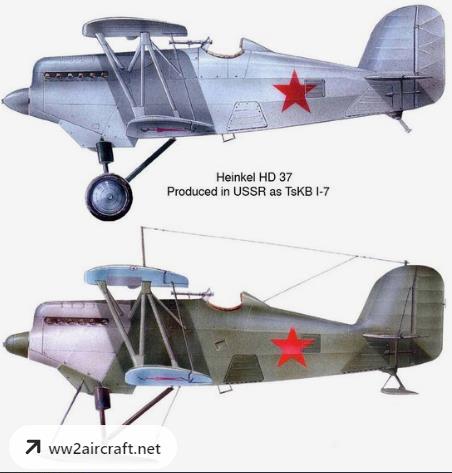| Type |
Single seat fighter |
Polikarpov I-7 Single seat fighter |
| Engine |
1 BMW VI 7,3 Z |
1 Mikulin M-17F |
| Dimensions |
Length 7,0 m , height 3,2 m , span 10,0 m, wing area 26,71 m2 , |
Length 6,95 m, height 3,20 m , span 10,0 m , wing area 26,7 m2 , |
| Weights |
Empty 1267 kg, loaded 1685 kg , max. take off weight |
Empty 1296 kg, loaded 1729 kg, max. take off weight fuel and oil 200 kg |
| Performance |
Max.. speed 312 km/h at sea level, 285 km/h at 5000 m, cruising speed 273 km/h , landing speed 96 km/h, range 700 km, endurance 3 h , service ceiling 8600 m , climb to 1000 m 1 min, ., to 3000 m 4,8 min |
Max.. speed 290 km/h at sea level, 277 km/h at 5000 m, landing speed 96 km/h, cruising speed , range 700 km, endurance , service ceiling 7200 m , climb 9,7 m/sec., to 1000 m 2 min., to 3000 m 6,6 min, 360 degrees turn 12 sec., take off run 90 m, landing run 160 m |
| Armament |
2 fixed, forward-firing machine guns |
2 fixed, forward-firing 7 62 mm PV-1 machine guns |


